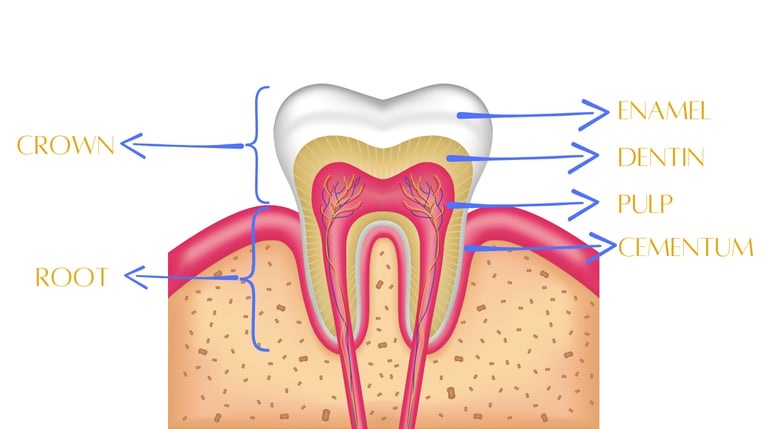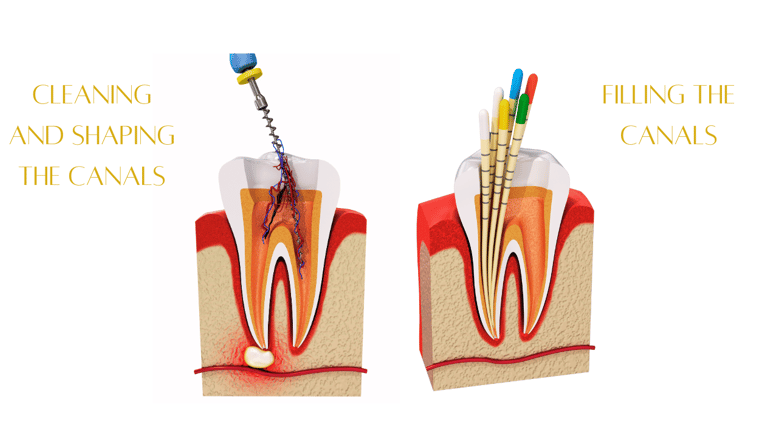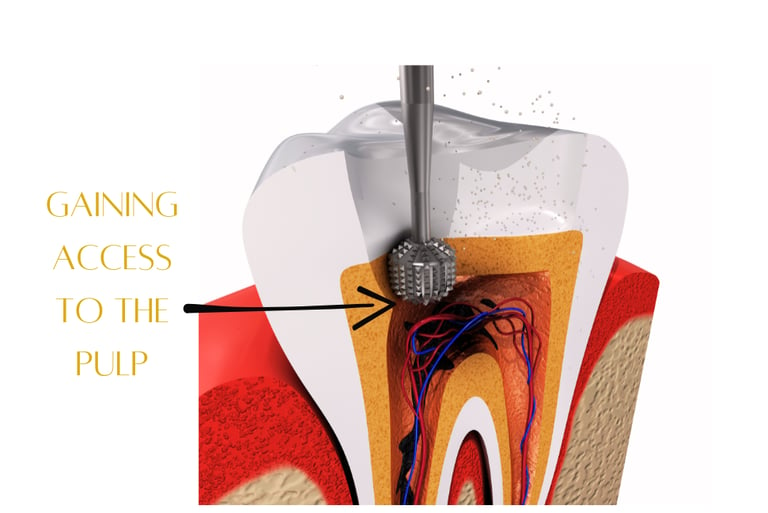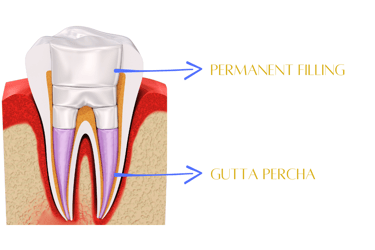Do You Really Need a Root Canal Treatment? Symptoms, Procedure & What to Expect
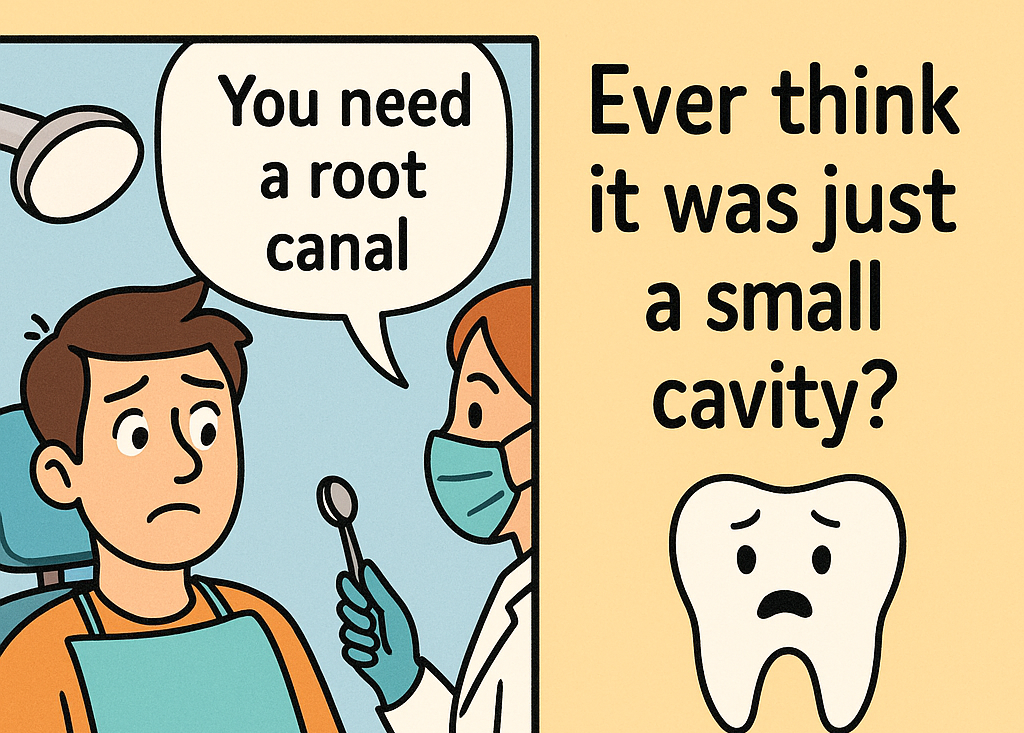

Ever visited your dentist thinking it was just a small cavity—only to hear, “You need a root canal”? You’re not alone. This common surprise can leave patients feeling anxious or confused. But understanding what a root canal is, why it’s needed, and how the procedure works can help ease that anxiety.
In this post, we’ll break down everything you need to know about root canal treatment—from causes and symptoms to the step-by-step procedure and what to expect afterward.
What is Root Canal Treatment?
A root canal is a dental procedure used to save a tooth that is severely infected or damaged on the inside. During this treatment, the dentist removes the infected pulp (the soft tissue inside the tooth), disinfects the area, and fills it with a special material to prevent further infection. The tooth is then sealed and usually restored with a dental crown to bring back full function and strength.
First, let’s look at the layers of the tooth from the outermost to the deeper layers to understand where the pulp is.
Enamel: The hard, outer surface of the crown portion of the tooth that protects it from damage and decay.
Dentin: The softer, yellowish tissue beneath the enamel. Dentin contains tiny tubes (called dentinal tubules) that lead to the nerve endings inside the tooth.
Pulp: The innermost part of the tooth, where the nerves and blood vessels are located.
Cementum: It is a hard tissue that covers the roots of the tooth, helping anchor it to the jawbone.
When is a root canal procedure done?
A root canal treatment is required when the pulp inside a tooth becomes infected or damaged. This typically happens in the following situations:
Severe Tooth Decay: If a cavity is left untreated, it can progress deep into the tooth, reaching the pulp. Once the pulp becomes infected, it can cause pain and swelling.
Cracked or Chipped Tooth: A crack or chip in the tooth can expose the pulp to bacteria, leading to an infection.
Trauma or Injury: A blow to the tooth, such as from an accident or sports injury, can damage the pulp, even if there’s no visible crack or chip.
Persistent Tooth Pain or Sensitivity: If you experience severe tooth pain or sensitivity to hot and cold that lingers, it could indicate pulp damage or infection, signaling the need for a root canal.
Swelling or Abscess: If you notice swelling in your gums or around the tooth, or if there’s a pimple-like bump on the gum, it could mean the infection has spread and an abscess has formed. This requires immediate attention and often a root canal.
In these cases, a root canal treatment is needed to remove the infected pulp, relieve pain, and save the tooth from further damage or extraction. If left untreated, the infection can spread and cause more serious health issues.
How Is A Root Canal Treatment done?
A root canal treatment typically involves several steps to remove the infection, clean the tooth, and restore it to its normal function. Here’s a breakdown of the process:
1. Initial Examination and X-ray
Before the procedure begins, your dentist will examine your tooth and take an X-ray to check the extent of the infection or damage and see the number and shape of your canals.
2. Anesthesia
To ensure you’re comfortable during the procedure, the dentist will numb the area around the affected tooth with a local anesthetic. This will make the treatment virtually painless.
3. Accessing the Pulp
Once the area is numb, the dentist will create a small opening in the top of the tooth. This allows access to the pulp (the soft tissue inside the tooth), where the infection or damage is located.
4. Removing the Infected Pulp
The dentist will then carefully remove the infected or damaged pulp from the inside of the tooth. This is done using small, specialized tools. The space inside the tooth is cleaned thoroughly to ensure that all infection is removed.
5. Cleaning and Shaping the Root Canals
After removing the pulp, the dentist will clean and shape the empty canals. This step is essential to make sure the space is free of bacteria and debris, and it prepares the tooth for filling.
6. Filling and Sealing the Canals
Once the canals are clean and dry, the dentist will fill them with a rubber-like material called gutta-percha. This seals the tooth and prevents bacteria from re-entering.
7. Filling the Tooth
After filling the root canals, the dentist will seal the opening at the top of the tooth with a temporary or permanent filling.
8. Restoring the Tooth
A root canal-treated tooth will need additional protection. Since the procedure often weakens the tooth, the dentist will likely place a crown or large filling on the tooth to restore its strength and function.
9. Follow-Up
Regular follow-up appointments at intervals of 6 months or a year are scheduled to ensure proper maintenance of the treated tooth.
Frequently Asked Questions
Is a root canal painful?
With modern techniques and anesthesia, it’s usually no more uncomfortable than a regular filling.How long does the procedure take?
It typically takes 2–3 visits but it depends on the complexity of the tooth and the infection.Can I go back to work afterward?
Yes, many patients return to work the same day.How much does a root canal cost?
It varies based on the clinic—but it's often cheaper (and better) than extracting and replacing the tooth.
Conclusion: Don’t Fear the Root Canal
A root canal treatment is not something to fear—it’s a vital, pain-relieving procedure that can save your natural tooth and prevent more serious issues down the road.
Need a Root Canal or Not Sure? We’re Here to Help.
If you're experiencing tooth pain, sensitivity, or swelling—don't wait. Early treatment can save your tooth and your smile.
👉 Book your consultation now with our gentle and experienced dental team.
